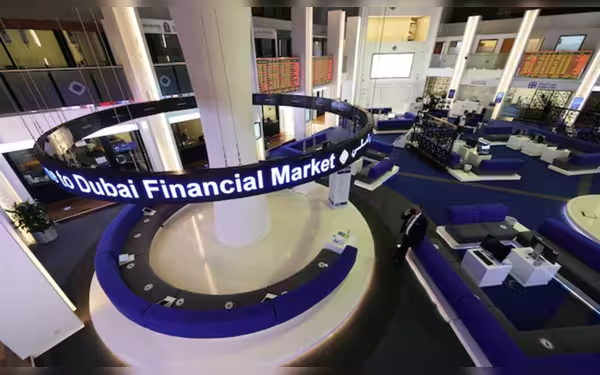Saturday, November 16, 2024 05:36 PM
Gulf Markets Surge as Central Banks Cut Rates Following Fed
- Gulf stock markets rise after interest rate cuts.
- Saudi Arabia's index gains 0.4% amid positive sentiment.
- Qatar National Bank shares increase, boosting local index.
 Image Credits: brecorder
Image Credits: brecorderGulf stock markets rise as central banks cut rates to align with the US Federal Reserve, boosting investor sentiment and economic growth.
In recent developments, major stock markets in the Gulf region experienced a notable rise during early trading on Thursday. This surge follows a significant policy shift by central banks in the area, which have opted to cut their key interest rates. This decision comes in the wake of a larger-than-usual easing of monetary policy by the US Federal Reserve, which reduced its benchmark rate by 50 basis points (bps) on Wednesday. Policymakers are anticipating another half a percentage point decrease by the end of this year, indicating a proactive approach to stimulate economic growth.
Saudi Arabia, the largest economy in the Gulf, saw its benchmark index gain 0.4%. A key player in this rise was Al Rajhi Bank, which recorded a 1.1% increase. The Saudi central bank announced a reduction in its repurchase agreement (Repo) rate and reverse repo rate, each by 50 bps, bringing them down to 5.5% and 5.0%, respectively. This move is expected to enhance liquidity in the market and encourage borrowing.
Oil prices, which play a crucial role in the financial markets of the Gulf, also saw an uptick following the US rate cut. However, concerns regarding global demand continue to loom, which has somewhat limited the extent of these gains. In Dubai, the main share index rose by 0.5%, primarily driven by a 1.2% increase in the shares of blue-chip developer Emaar Properties. This reflects a positive sentiment among investors, despite the underlying concerns.
Additionally, the United Arab Emirates’ central bank followed suit by reducing its base rate on the overnight deposit facility by half a percentage point to 4.90%. This alignment of monetary policy with the US Federal Reserve is common in the Gulf Cooperation Council (GCC) region, as most local currencies are pegged to the US dollar. This peg ensures that the economic policies of the US have a direct impact on the financial stability of the Gulf nations.
In Qatar, the benchmark index also saw a rise of 0.4%, largely influenced by a 0.6% increase in the shares of Qatar National Bank, the largest lender in the Gulf. The Qatari central bank made a significant move as well, cutting key interest rates by 55 basis points on Wednesday. This coordinated effort among Gulf nations to adjust interest rates reflects a unified strategy to bolster their economies in response to global economic conditions.
The recent cuts in interest rates by Gulf central banks, mirroring the actions of the US Federal Reserve, signify a strategic move to stimulate economic growth in the region. As these markets respond positively, it is essential for investors to remain vigilant about global economic trends and their potential impact on local markets. The interplay between oil prices, interest rates, and global demand will continue to shape the financial landscape of the Gulf, making it a critical area to watch for future developments.













